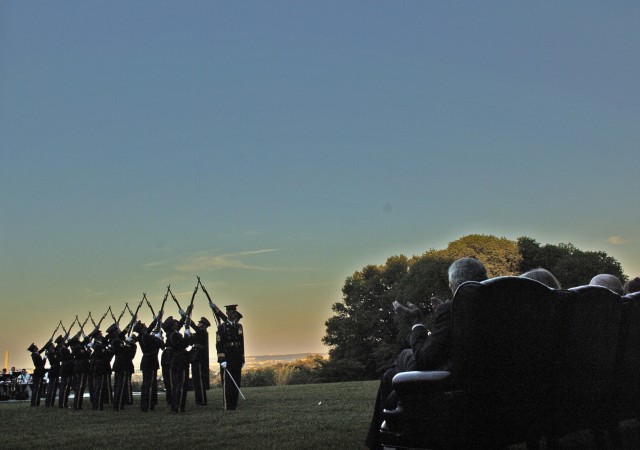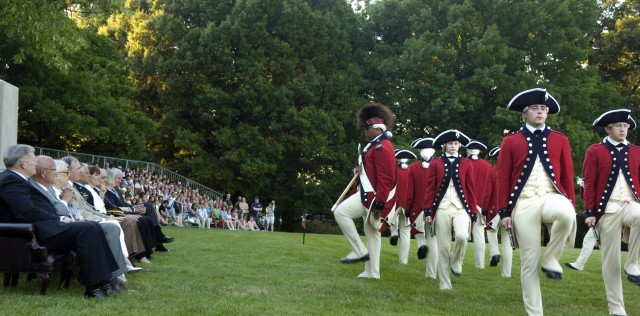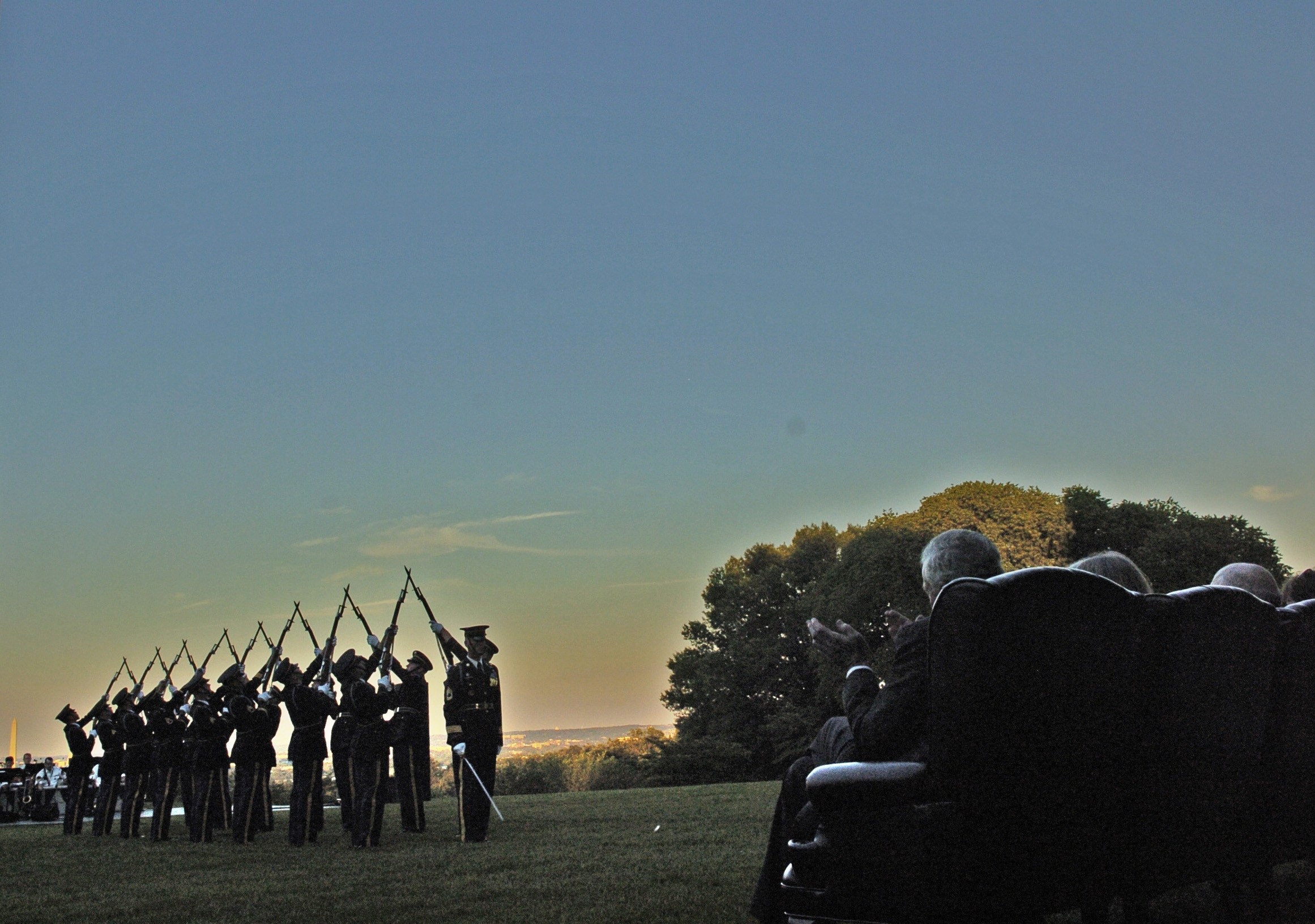WASHINGTON (Army News Service, June 12, 2008) -- A military custom as old as United States Army itself is carried out Wednesday evenings in Washington, D.C., as part of the Army's Tribute to Freedom outreach.
Usually held at the site of the old Washington Barracks, now Fort Lesley J. McNair, in Washington, D.C., Twilight Tattoo moved across the Potomac to Fort Myer, Va., for an Army birthday week performance hosted by Army Chief of Staff Gen. George Casey Jr. and attended by five of his predecessors, a group of special invitees, the Army Teen Panel, and 15 school groups from Oregon to Georgia.
Presented by the U.S. Army Military District of Washington, the precision drill, music and ceremony presents the history of the Army and growth of the nation in pageant.
Those who are familiar with Twilight Tattoo know that the custom of the evening parade stems from the call to quarters for English troops quartered in walled towns of the Dutch low countries during the troubled wars of the 17th century. Musicians would traverse the towns with the call to "doe den tap toe!" Shut off the taps.
When the troops were no longer quartered wherever lodging could be found (one of the irritants that sparked the American Revolution), and forts and barracks were stood up, the evening parades were adapted to the new venues. The "military band of music" might be a professional organization, paid for through an officer's mess, or come from within the ranks, reflecting the importance of music to the drilling of infantry and transmission of orders in the chaos of battle.
All of this is reflected in the tattoo at Fort McNair, particularly, of course, in the two participating units that hearken directly to the Revolutionary War and the birth of the American Army - the Old Guard Fife and Drum Corps and the Commander-in-Chief's Guard.
The Continental Army learned the importance of drill from Gen. George Washington and a Prussian officer schooled during the Seven Years' War but out of work and looking for employment when he met Benjamin Franklin in Paris in 1777. Frederick William Baron von Steuben joined the American cause at Valley Forge in February of 1778 and began drilling a select company of 100 men. The company became an inspiration to the rest of the army, and the system of drill von Steuben had committed to paper (in French) was instrumental in fashioning by that spring and summer a greatly more effective force.
So successful was the system in instilling order and discipline within the army that Congress ordered von Steuben's drill manual, commonly called "The Blue Book," observed as regulation by all troops of the United States. The 153-page booklet stood as the Army's official manual until 1812, prescribing uniform, weapons, marching formations, inspections, conduct of the army in camp and during maneuvers, even down to where and when the drummers might practice, since their beats mandated specific actions.
As the Army moves beyond its 233rd anniversary, the traditions it has adopted and established remain relevant in telling the Army's proud story. School groups in particular have been eager to include a performance in their schedule during trips to Washington.
In 2007 some 24,700 people were reached during six performances on the National Mall. With the show moved to Fort McNair for 2008, the attendance has held up well, with audiences numbering upwards of 3,000.
The performances include the pop-heavy music of Pershing's Own, the flash of bayonet-tipped Springfield rifles of the Army Drill Team, and the swift pace of the Flag Story portraying the look and feel of the Army down to the present day. A highlight of every performance, though, is the opportunity for Soldiers and audience to mingle afterward, shaking hands and taking photographs.






Social Sharing